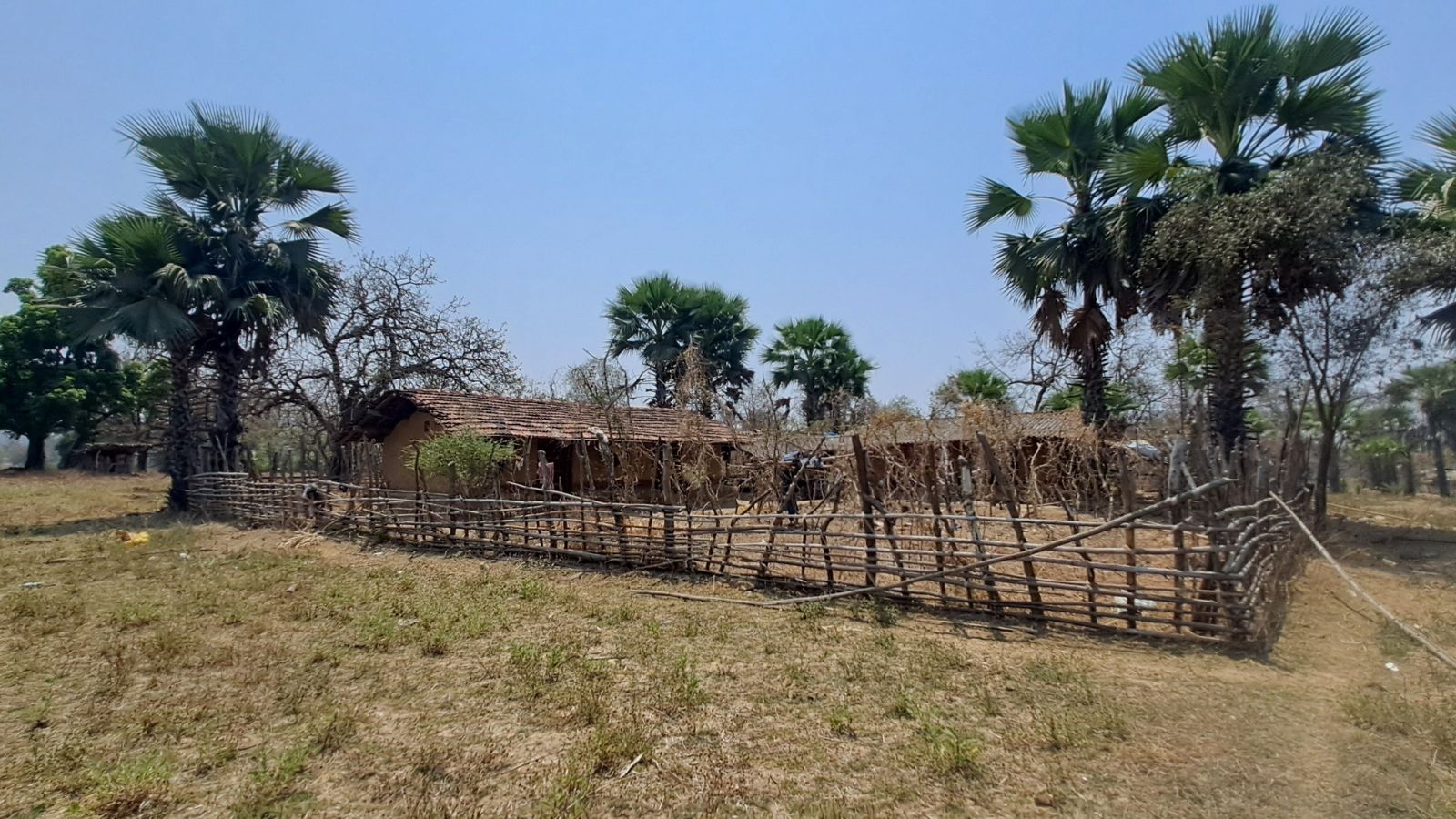Shot dead at 19, how Jyoti Hemla went from being an ashram school girl to a Maoist
At the portacabin in Bijapur where Jyoti studied, the teachers said they were new and refused to share records of past students.
 Jyoti’s family, including her mother and sister, at the district hospital in February, when her post-mortem procedure was conducted. (Photo: Jayprakash S Naidu)
Jyoti’s family, including her mother and sister, at the district hospital in February, when her post-mortem procedure was conducted. (Photo: Jayprakash S Naidu)It was a grim police handout photograph — eyes closed, a trickle of dried blood on the left side of her temple. “Unidentified Maoist,” read the description in the note released on February 9, after one of the biggest anti-Maoist operations in Chhattisgarh. Police later identified the girl in the photograph as Jyoti Hemla, one of the 31 Maoists killed that day in the forests of the Indravati National Park in Bijapur.
How did a 19-21-year old who until a few years ago studied in a government school in Bijapur end up in the forests of Indravati? It’s a question Jyoti’s family has been grappling with since the encounter.
On February 11, as the family waited for hours at the district hospital to take her body home after the post-mortem procedure, her uncle Bhadru Hemla had burst into tears. “Bahut hi achi bachhi thi, sir. Yahan Bijapur ke porta cabin me padti thi (She was a very good girl. She used to study in a portacabin school in Bijapur,” he said.
 Jyoti’s house in Sawnar, a village in Bijapur district. (Photo: Jayprakash S Naidu)
Jyoti’s house in Sawnar, a village in Bijapur district. (Photo: Jayprakash S Naidu)
Portacabin schools were introduced by the Chhattisgarh government in 2010 for children in Naxal-affected areas of the state to tackle the loss of education as Maoists destroyed several school buildings. The portacabin schools continue till date, housing 28,000 children in Bijapur
At the portacabin in Bijapur where Jyoti studied, the teachers said they were new and refused to share records of past students.
When asked about Jyoti, Bijapur SP Jitendra Yadav directed The Indian Express to the press release issued a day after the encounter in which Jyoti was identified as a member of the banned Communist Party of India (Maoist) with a bounty of Rs 2 lakh on her head. The note also said that among the 31 killed were six 21-year-olds, including Jyoti, and eight 20-year-olds.
The Indian Express visited Sawnar, a village in Bijapur district, to track Jyoti’s journey — from the portacabin school that is few kilometres away from the Bijapur Collectorate and the police headquarters, to dropping out in while in Class 3, and finally joining the Maoist ranks in 2021 at the age of 16.
 Jyoti Hemla was one of the 31 Maoists killed in an encounter on February 9 in the forests of the Indravati National Park in Bijapur.
Jyoti Hemla was one of the 31 Maoists killed in an encounter on February 9 in the forests of the Indravati National Park in Bijapur.
A village nearly 30 kilometers from the district headquarters in Bijapur, Sawnar falls in Gangaloor, an area that is known to be a recruitment, training and high-level meeting centre of Maoists. Top police sources said that many of the Maoist cadres gunned down over the last few decades in Chhattisgarh as well as neighbouring states were from Gangloor.
At Sawnar, only her minor sister was home, picking mahua flowers from a tree in their compound. Her mother had gone deep into the jungles with other women to gather mahua, while her father and a brother had gone to Telangana to “pluck chillies”. Her two other brothers studied in an ashram school in Bijapur while her married elder sister lived in another village.
Jyoti’s uncle Laxman Hemla, 40, and her 17-year-old cousin, both speaking on the phone, and her childhood friend and neighbour (name withheld) spoke about all that had gone wrong.
Laxman said, “Jyoti was born in 2005, sometime in May or June. Though barely anyone in our village has a birth certificate, I vividly remember her birth year as she was born around the time the Salwa Judum was set up.”
Like most other children from Gangaloor, Jyoti and her childhood friend joined the portacabin school in Bijapur. While the friend stayed on, Jyoti dropped out in Class 3 to help her parents with household work and to collect forest produce.
 The portacabin school in Bijapur where Jyoti studied till Class 3. (Photo: Jayprakash S Naidu)
The portacabin school in Bijapur where Jyoti studied till Class 3. (Photo: Jayprakash S Naidu)
“I last met her in 2023, after she joined the Sangathan (Maoists). She came to the village with a couple of Maoists. She asked me about my studies and what they teach in school. She said she missed school. I asked her why she had dropped out and she said that she had no time for studies now that she was with the Sangathan. She loved mangoes and took some with her when she went back. She didn’t ask me to join the Sangathan but when I asked her to leave, she said they wouldn’t let her,” the friend said.
Her uncle Laxman says Jyoti joined the Maoists years after she dropped out of the portacabin school and, like most other child recruits, was influenced by the Chaitya Natya Mandal (CNM), a cultural wing of the Maoists. Police sources said Jyoti joined the Jantana Sarkar school run by the Maoists in Sawnar before becoming a part of the CNM.
Jyoti’s uncle Laxman said, “They took her away by the end of 2021. I told her to quit the movement many times but she would simply look down and say no. She would say, ‘Dinesh bhaiya (Dinesh Mudiyam, a Divisional Committee Member) ne bola hai kitna bhi bolenge toh bhi chodna nahi hai (people will keep asking you to quit but do not leave the organisation).”
Incidentally, earlier this month, Dinesh — who has 26 murder cases to his name and who was allegedly involved in two attacks on security forces, in 2005 and 2017, killing seven jawans — surrendered to the police along with his wife. Police sources said the 26 cases against him are likely to be closed.
Police sources admit that the recruitment of children remains a concern, especially in Bijapur villages beyond the Indravati River and the Indravati National Park, where there is little presence of the State.
“The villagers have no choice. The Maoists force them to send at least one child from their family to join the Maoist organisation,” said Inspector General of Police for Bastar Range, Sundarraj P.
Though police say many Maoists from Gangaloor have been surrendering over the last two years, their influence was evident when a 45-kg command Improvised Explosive Device (IED) was planted on the Palnar road near a police camp on Friday, March 28, a week after 26 Maoists were gunned down in south Gangaloor on March 20.



- 01
- 02
- 03
- 04
- 05




























